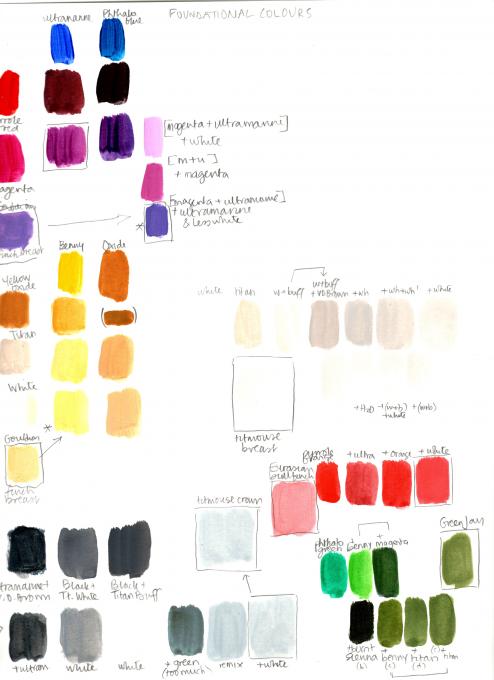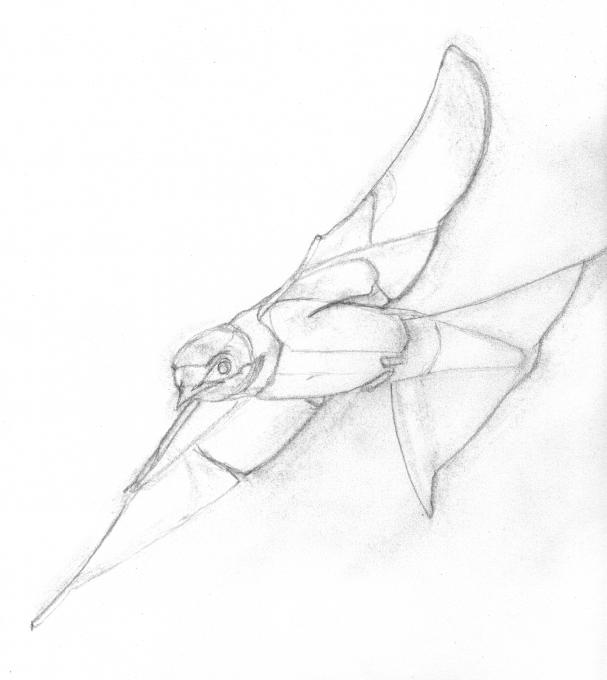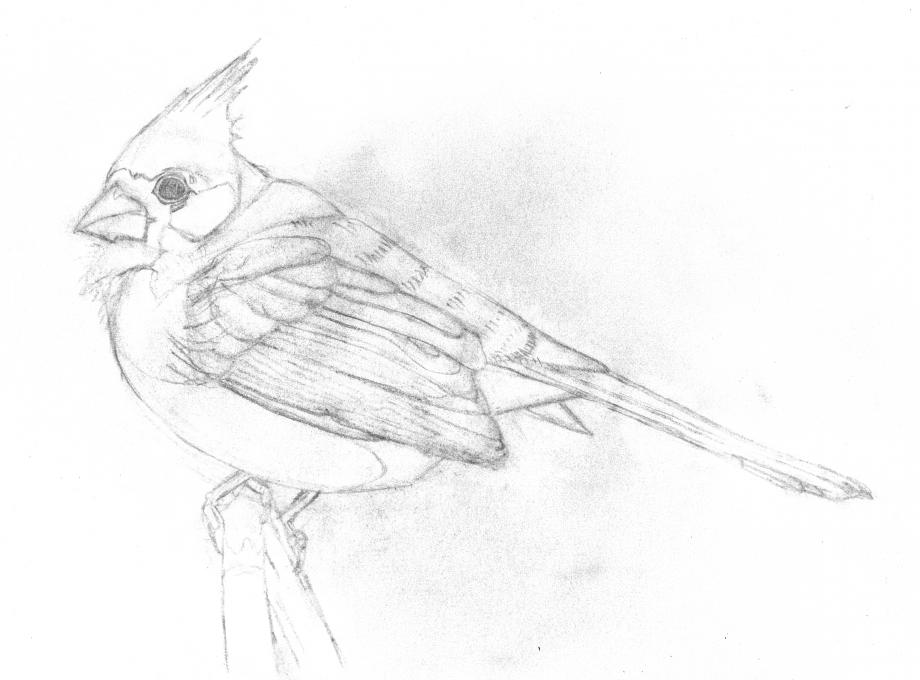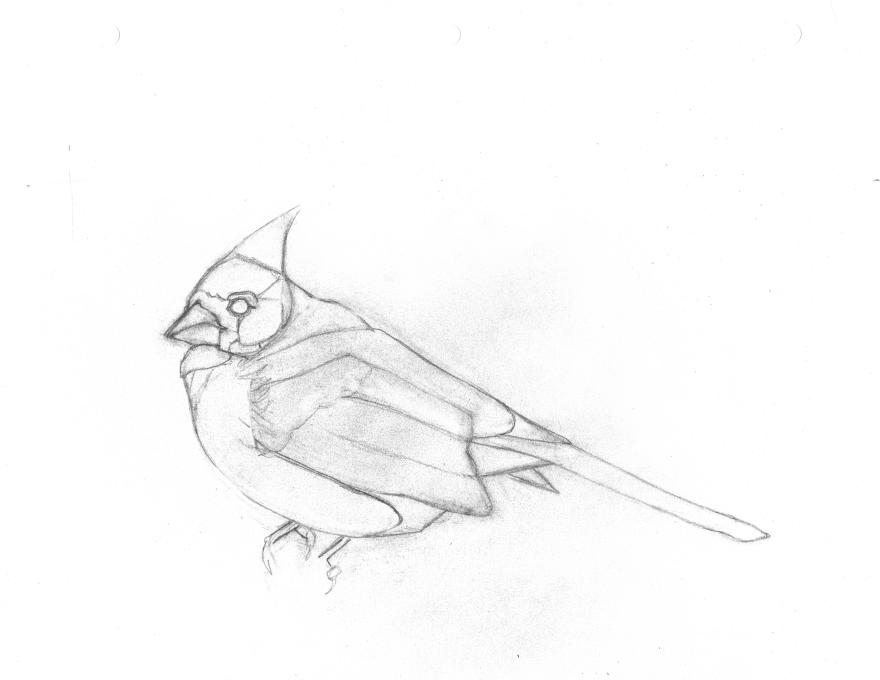Jenny
Forum Replies Created
Viewing 12 posts - 1 through 12 (of 12 total)
-
JennyParticipant
 in reply to: Paint: Mix Colors to Create Hue #946482
in reply to: Paint: Mix Colors to Create Hue #946482 -
JennyParticipant
 in reply to: Paint: 7 Essential Bird Painting Techniques #946399
in reply to: Paint: 7 Essential Bird Painting Techniques #946399 -
JennyParticipant
 in reply to: Paint: Mix Colors to Change Value #946397
in reply to: Paint: Mix Colors to Change Value #946397 -
JennyParticipantHi, it isn't possible to insert images any more. I hope I can come back and delete this comment in the near future. I enjoy seeing Ria's though! Keep going!!in reply to: Paint: Mix Colors to Create Hue #944656
-
JennyParticipant
@Ria This is an interesting tip. Like you, I did number the feathers, but instead of the pointed end of the feather I numbered the negative space between--this helped in getting the shape between the feathers and sent up 2 lines from the intersection (instead of a space). If I'd numbered at the tip like above, I'd just round the space instead of sending the lines up to the coverts. I also found it helped to draw in the shaft of the feather, although this was not in the instructions, nor will it be useful when transferring to the painting class next up. Thanks for sharing ideas. Jenny.
in reply to: Draw: Barn Swallow Individual Feathers #942045 -
JennyParticipant
 Wow! I am getting sludgy--it looks better in real life! My scanner croaked at the better image (not shown here) and refused to upload. This was really really difficult, and I find it hard to not do details. I notice others are facing this challenge. I didn't hold this up to the light at all, but relied solely on the reference photograph, and again, on the instructor's final rendition, in conjunction with the feather layering images. Difficulties included facing challenges as I'd erased the 'maximum' marks that framed the original drawing, and trying to shorten the body once the negative space was considered (the body remains too long even with adjustment). The clarity that I anticipate we need to transfer the image is here somewhere. I'm hoping I can ignore a lot of the lines when this is transferred to watercolour paper. At least it looks like a swallow. My partner told me he could identify the bird, but he was looking at Jane Kim's image not mine. So I am having fun mixed in with a few groans. in reply to: Draw: Barn Swallow Individual Feathers #942033
Wow! I am getting sludgy--it looks better in real life! My scanner croaked at the better image (not shown here) and refused to upload. This was really really difficult, and I find it hard to not do details. I notice others are facing this challenge. I didn't hold this up to the light at all, but relied solely on the reference photograph, and again, on the instructor's final rendition, in conjunction with the feather layering images. Difficulties included facing challenges as I'd erased the 'maximum' marks that framed the original drawing, and trying to shorten the body once the negative space was considered (the body remains too long even with adjustment). The clarity that I anticipate we need to transfer the image is here somewhere. I'm hoping I can ignore a lot of the lines when this is transferred to watercolour paper. At least it looks like a swallow. My partner told me he could identify the bird, but he was looking at Jane Kim's image not mine. So I am having fun mixed in with a few groans. in reply to: Draw: Barn Swallow Individual Feathers #942033 -
JennyParticipantHelen, I'm new at this game, so cannot give the best advice (wouldn't it be nice if we got feedback from Ms Kim?) but you may find erasing some of the extraneous lines brings some clarification. You've really captured the movement of this bird and I feel that it has been encapsulated at just that moment when and where the bird itself is deciding what direction to take. This seems a real skill that I will have to move towards learning. It is like the paper isn't enough to hold the bird in place--it is off on its adventure. I like that. Jenny.
-
JennyParticipant
 I found the proportions of this were really difficult to come true and I had to spend a while considering the angles of the wings, and the distance away from the foreground of each part of the bird. I was only happier when I combined Jane Kim's sketch with the photo reference whereas before I drew the cardinal first without consulting the instructor's sketch. While this might be a step back, it is only the second bird I've tried sketching. Again the really awful sketch paper (my papers are still in the mail thanks to holidays, international shipping, and Covid) in my really awful hands ended up being salt 'n pepper-y with my Staedtler stick eraser rampant (with its way too broad shaft). So I also learned about the necessity to look for a narrower eraser online. I have always envisioned art for artists only, as they could just 'see' directly what I could not--painting fast and oftentimes realistically. Now I am becoming aware of tricks--like getting geometrical shapes down on the page first, and using proportion, angles, lines. It is not just looking at the end image, which thankfully is static (heaven help with painting plein air), but understanding that there is artistic licence--an innate force within us finally expressing while simultaneously withholding itself. The complexity of the issues and the selection of alternative methods and approaches have as their corollary new fields of vision.
I found the proportions of this were really difficult to come true and I had to spend a while considering the angles of the wings, and the distance away from the foreground of each part of the bird. I was only happier when I combined Jane Kim's sketch with the photo reference whereas before I drew the cardinal first without consulting the instructor's sketch. While this might be a step back, it is only the second bird I've tried sketching. Again the really awful sketch paper (my papers are still in the mail thanks to holidays, international shipping, and Covid) in my really awful hands ended up being salt 'n pepper-y with my Staedtler stick eraser rampant (with its way too broad shaft). So I also learned about the necessity to look for a narrower eraser online. I have always envisioned art for artists only, as they could just 'see' directly what I could not--painting fast and oftentimes realistically. Now I am becoming aware of tricks--like getting geometrical shapes down on the page first, and using proportion, angles, lines. It is not just looking at the end image, which thankfully is static (heaven help with painting plein air), but understanding that there is artistic licence--an innate force within us finally expressing while simultaneously withholding itself. The complexity of the issues and the selection of alternative methods and approaches have as their corollary new fields of vision. -
JennyParticipant
 I recognize that I am getting tired so must stop--this is indicated on the sketch by the parallel unrealistic marks on the back of the bird, and the reworking of the primaries. These parallel lines were uber difficult, and while I was happy at first, when it came to using the kneaded eraser I found that the eraser removed 90% of my marks. This meant that I had to re-do the wing feather layering, and this meant my pencil started getting thicker lines, and almost impossible to erase any more. The silver grey (Canadian eh?) 'mosquito' swarm over the page is my kneaded eraser objecting to having been used. I find that my parts (like on the cheeks) didn't match the beginning of the video, so I erased them and followed the teacher, then at the end of the video was told that I actually got it right the first time! My poor eraser! My sanity! This, of course, is due to a lack of confidence on my part, perhaps, but more likely that I am a newbie in both art and bird drawing--I don't trust myself (yet). It is possible that I have to control my lack of patience, so I find the advice to stand up and walk away is very appropriate. Great course and clear instructions, thank you Jane. in reply to: Draw: Northern Cardinal Feathers #940776
I recognize that I am getting tired so must stop--this is indicated on the sketch by the parallel unrealistic marks on the back of the bird, and the reworking of the primaries. These parallel lines were uber difficult, and while I was happy at first, when it came to using the kneaded eraser I found that the eraser removed 90% of my marks. This meant that I had to re-do the wing feather layering, and this meant my pencil started getting thicker lines, and almost impossible to erase any more. The silver grey (Canadian eh?) 'mosquito' swarm over the page is my kneaded eraser objecting to having been used. I find that my parts (like on the cheeks) didn't match the beginning of the video, so I erased them and followed the teacher, then at the end of the video was told that I actually got it right the first time! My poor eraser! My sanity! This, of course, is due to a lack of confidence on my part, perhaps, but more likely that I am a newbie in both art and bird drawing--I don't trust myself (yet). It is possible that I have to control my lack of patience, so I find the advice to stand up and walk away is very appropriate. Great course and clear instructions, thank you Jane. in reply to: Draw: Northern Cardinal Feathers #940776 -
JennyParticipantWow, this is impressive. And it looks like you have few erasures! I can learn from this image, thanks for posting, Jenny (Jane).in reply to: Draw: Northern Cardinal Feather Groups #939667
-
JennyParticipant
 I have never drawn before nor used acrylics, so this is a steep learning curve. I found that I had to erase so frequently that I'm losing the surface of the paper! I also find it difficult restricting myself to what the teacher wishes--it goes against my nature to make straight lines for birds, so the boxy shapes have been a challenge. And from the mask above I let myself flourish the pattern. I also forgot to put in the shoulder, but I seem to have things in the right place. I find it interesting seeing where the lines continue--like from the tail feathers along the primaries (in this instance), and the wing coverts line directly below the eye. It is fascinating realizing just how many different feathers and feather groupings there are, and how they act together. This is why I like to see the sparrow move via the video online, and how the belly is covered by flank groupings of feathers--when by itself it has no feathers. I am chomping at the bit to put in the jazzy crest feathers. I am particularly impressed by how the teacher has "choreographed" the lead-in so that beginners like myself are at ease. Also, even if you are an artist, there is plenty to learn and admire about the birds themselves. in reply to: Draw: Northern Cardinal Feather Groups #939666
I have never drawn before nor used acrylics, so this is a steep learning curve. I found that I had to erase so frequently that I'm losing the surface of the paper! I also find it difficult restricting myself to what the teacher wishes--it goes against my nature to make straight lines for birds, so the boxy shapes have been a challenge. And from the mask above I let myself flourish the pattern. I also forgot to put in the shoulder, but I seem to have things in the right place. I find it interesting seeing where the lines continue--like from the tail feathers along the primaries (in this instance), and the wing coverts line directly below the eye. It is fascinating realizing just how many different feathers and feather groupings there are, and how they act together. This is why I like to see the sparrow move via the video online, and how the belly is covered by flank groupings of feathers--when by itself it has no feathers. I am chomping at the bit to put in the jazzy crest feathers. I am particularly impressed by how the teacher has "choreographed" the lead-in so that beginners like myself are at ease. Also, even if you are an artist, there is plenty to learn and admire about the birds themselves. in reply to: Draw: Northern Cardinal Feather Groups #939666 -
JennyParticipantCan you please send the link to the pdf of images we need to use? I'm finding difficulty once the course is started to find the page or link available to access the document, and no reference to where it is ("Show Contents"/lessons/introduction to the course) so you can find the images you need to print off. It would be helpful to post this link in all lessons, even if tucked away at the bottom of the page. Thanks.in reply to: Paint: Color Reference Card #937653
Viewing 12 posts - 1 through 12 (of 12 total)



 Wow! I am getting sludgy--it looks better in real life! My scanner croaked at the better image (not shown here) and refused to upload. This was really really difficult, and I find it hard to not do details. I notice others are facing this challenge. I didn't hold this up to the light at all, but relied solely on the reference photograph, and again, on the instructor's final rendition, in conjunction with the feather layering images. Difficulties included facing challenges as I'd erased the 'maximum' marks that framed the original drawing, and trying to shorten the body once the negative space was considered (the body remains too long even with adjustment). The clarity that I anticipate we need to transfer the image is here somewhere. I'm hoping I can ignore a lot of the lines when this is transferred to watercolour paper. At least it looks like a swallow. My partner told me he could identify the bird, but he was looking at Jane Kim's image not mine. So I am having fun mixed in with a few groans.
Wow! I am getting sludgy--it looks better in real life! My scanner croaked at the better image (not shown here) and refused to upload. This was really really difficult, and I find it hard to not do details. I notice others are facing this challenge. I didn't hold this up to the light at all, but relied solely on the reference photograph, and again, on the instructor's final rendition, in conjunction with the feather layering images. Difficulties included facing challenges as I'd erased the 'maximum' marks that framed the original drawing, and trying to shorten the body once the negative space was considered (the body remains too long even with adjustment). The clarity that I anticipate we need to transfer the image is here somewhere. I'm hoping I can ignore a lot of the lines when this is transferred to watercolour paper. At least it looks like a swallow. My partner told me he could identify the bird, but he was looking at Jane Kim's image not mine. So I am having fun mixed in with a few groans.  I found the proportions of this were really difficult to come true and I had to spend a while considering the angles of the wings, and the distance away from the foreground of each part of the bird. I was only happier when I combined Jane Kim's sketch with the photo reference whereas before I drew the cardinal first without consulting the instructor's sketch. While this might be a step back, it is only the second bird I've tried sketching. Again the really awful sketch paper (my papers are still in the mail thanks to holidays, international shipping, and Covid) in my really awful hands ended up being salt 'n pepper-y with my Staedtler stick eraser rampant (with its way too broad shaft). So I also learned about the necessity to look for a narrower eraser online. I have always envisioned art for artists only, as they could just 'see' directly what I could not--painting fast and oftentimes realistically. Now I am becoming aware of tricks--like getting geometrical shapes down on the page first, and using proportion, angles, lines. It is not just looking at the end image, which thankfully is static (heaven help with painting plein air), but understanding that there is artistic licence--an innate force within us finally expressing while simultaneously withholding itself. The complexity of the issues and the selection of alternative methods and approaches have as their corollary new fields of vision.
I found the proportions of this were really difficult to come true and I had to spend a while considering the angles of the wings, and the distance away from the foreground of each part of the bird. I was only happier when I combined Jane Kim's sketch with the photo reference whereas before I drew the cardinal first without consulting the instructor's sketch. While this might be a step back, it is only the second bird I've tried sketching. Again the really awful sketch paper (my papers are still in the mail thanks to holidays, international shipping, and Covid) in my really awful hands ended up being salt 'n pepper-y with my Staedtler stick eraser rampant (with its way too broad shaft). So I also learned about the necessity to look for a narrower eraser online. I have always envisioned art for artists only, as they could just 'see' directly what I could not--painting fast and oftentimes realistically. Now I am becoming aware of tricks--like getting geometrical shapes down on the page first, and using proportion, angles, lines. It is not just looking at the end image, which thankfully is static (heaven help with painting plein air), but understanding that there is artistic licence--an innate force within us finally expressing while simultaneously withholding itself. The complexity of the issues and the selection of alternative methods and approaches have as their corollary new fields of vision.  I recognize that I am getting tired so must stop--this is indicated on the sketch by the parallel unrealistic marks on the back of the bird, and the reworking of the primaries. These parallel lines were uber difficult, and while I was happy at first, when it came to using the kneaded eraser I found that the eraser removed 90% of my marks. This meant that I had to re-do the wing feather layering, and this meant my pencil started getting thicker lines, and almost impossible to erase any more. The silver grey (Canadian eh?) 'mosquito' swarm over the page is my kneaded eraser objecting to having been used. I find that my parts (like on the cheeks) didn't match the beginning of the video, so I erased them and followed the teacher, then at the end of the video was told that I actually got it right the first time! My poor eraser! My sanity! This, of course, is due to a lack of confidence on my part, perhaps, but more likely that I am a newbie in both art and bird drawing--I don't trust myself (yet). It is possible that I have to control my lack of patience, so I find the advice to stand up and walk away is very appropriate. Great course and clear instructions, thank you Jane.
I recognize that I am getting tired so must stop--this is indicated on the sketch by the parallel unrealistic marks on the back of the bird, and the reworking of the primaries. These parallel lines were uber difficult, and while I was happy at first, when it came to using the kneaded eraser I found that the eraser removed 90% of my marks. This meant that I had to re-do the wing feather layering, and this meant my pencil started getting thicker lines, and almost impossible to erase any more. The silver grey (Canadian eh?) 'mosquito' swarm over the page is my kneaded eraser objecting to having been used. I find that my parts (like on the cheeks) didn't match the beginning of the video, so I erased them and followed the teacher, then at the end of the video was told that I actually got it right the first time! My poor eraser! My sanity! This, of course, is due to a lack of confidence on my part, perhaps, but more likely that I am a newbie in both art and bird drawing--I don't trust myself (yet). It is possible that I have to control my lack of patience, so I find the advice to stand up and walk away is very appropriate. Great course and clear instructions, thank you Jane.  I have never drawn before nor used acrylics, so this is a steep learning curve. I found that I had to erase so frequently that I'm losing the surface of the paper! I also find it difficult restricting myself to what the teacher wishes--it goes against my nature to make straight lines for birds, so the boxy shapes have been a challenge. And from the mask above I let myself flourish the pattern. I also forgot to put in the shoulder, but I seem to have things in the right place. I find it interesting seeing where the lines continue--like from the tail feathers along the primaries (in this instance), and the wing coverts line directly below the eye. It is fascinating realizing just how many different feathers and feather groupings there are, and how they act together. This is why I like to see the sparrow move via the video online, and how the belly is covered by flank groupings of feathers--when by itself it has no feathers. I am chomping at the bit to put in the jazzy crest feathers. I am particularly impressed by how the teacher has "choreographed" the lead-in so that beginners like myself are at ease. Also, even if you are an artist, there is plenty to learn and admire about the birds themselves.
I have never drawn before nor used acrylics, so this is a steep learning curve. I found that I had to erase so frequently that I'm losing the surface of the paper! I also find it difficult restricting myself to what the teacher wishes--it goes against my nature to make straight lines for birds, so the boxy shapes have been a challenge. And from the mask above I let myself flourish the pattern. I also forgot to put in the shoulder, but I seem to have things in the right place. I find it interesting seeing where the lines continue--like from the tail feathers along the primaries (in this instance), and the wing coverts line directly below the eye. It is fascinating realizing just how many different feathers and feather groupings there are, and how they act together. This is why I like to see the sparrow move via the video online, and how the belly is covered by flank groupings of feathers--when by itself it has no feathers. I am chomping at the bit to put in the jazzy crest feathers. I am particularly impressed by how the teacher has "choreographed" the lead-in so that beginners like myself are at ease. Also, even if you are an artist, there is plenty to learn and admire about the birds themselves.